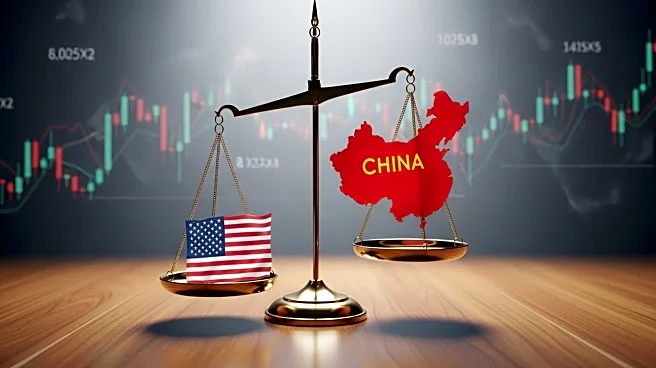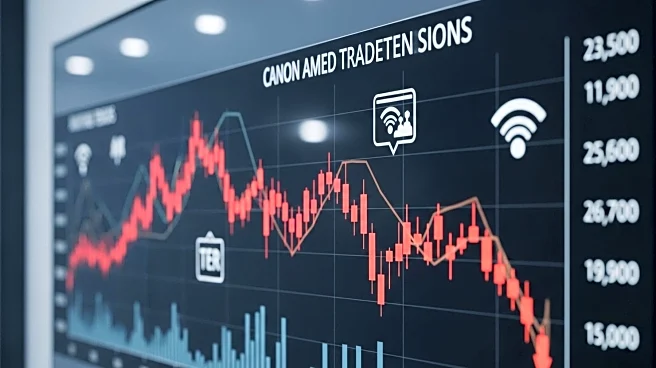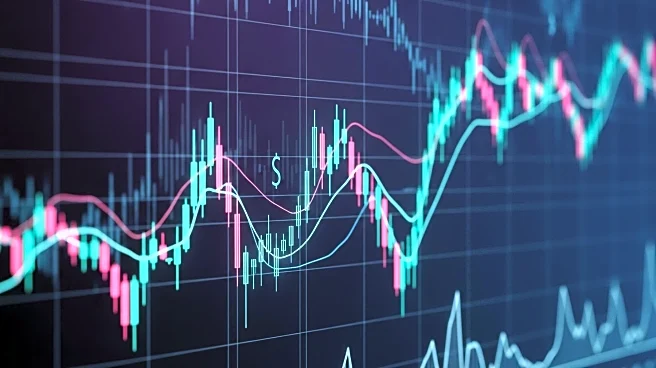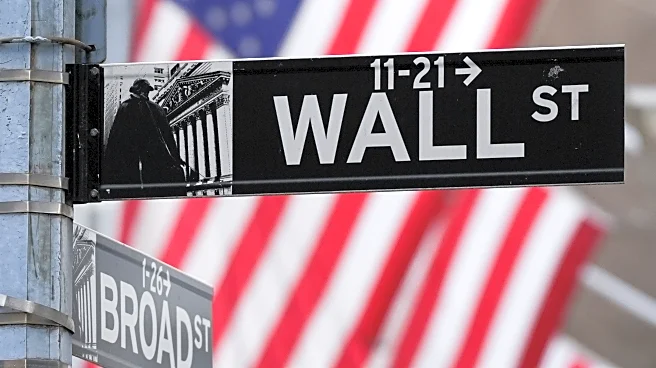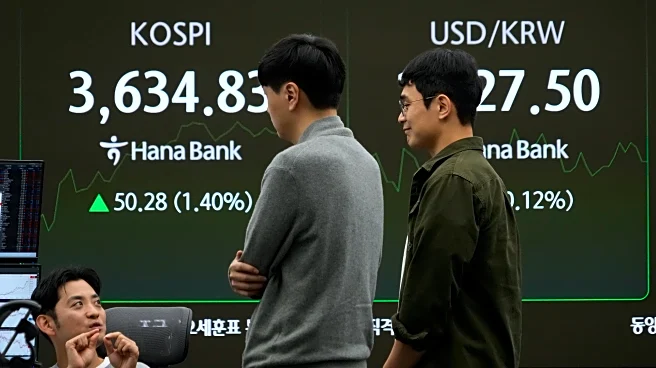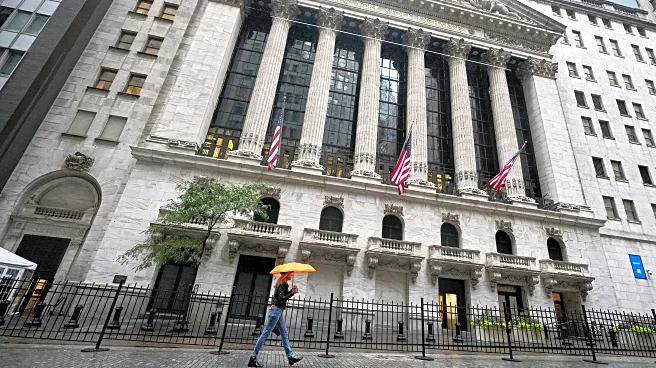What's Happening?
The S&P 500 index has experienced a 3% pullback from its all-time highs, prompting investors to consider put spreads as a viable hedge against equity exposure. Despite the U.S. stock market's decline, other global markets, such as Japan's Nikkei futures, have seen sharper drops, indicating heightened volatility. The volatility index (VIX) remains elevated, suggesting a sell-first mentality among investors. This environment makes vertical put spreads attractive, as they offer a cost-effective way to hedge against further market declines. The macroeconomic backdrop remains uncertain, with U.S.-China trade tensions, high real yields, and large fiscal deficits contributing to market instability.
Why It's Important?
The current market conditions highlight the importance of hedging strategies for investors seeking to protect their portfolios from potential downturns. The elevated volatility and macroeconomic uncertainties could lead to further declines in the S&P 500, making put spreads a prudent choice for risk management. Companies like Nvidia, Broadcom, and Meta have bolstered the index's earnings, but a weak payroll report or earnings miss could exacerbate the market's decline. Investors must navigate these challenges to safeguard their investments, especially as the market approaches critical support levels.
What's Next?
Investors will closely monitor upcoming economic reports and corporate earnings to gauge the market's direction. A breach of the S&P 500's 50-day moving average could signal further declines, prompting increased hedging activity. The potential for a full-blown correction remains if macroeconomic indicators disappoint, underscoring the need for strategic risk management. As the market evolves, investors may adjust their hedging strategies to align with changing conditions and protect their portfolios from adverse movements.
Beyond the Headlines
The current market dynamics reflect broader economic challenges, including the impact of geopolitical tensions and fiscal policies on investor sentiment. The elevated volatility skew suggests a cautious approach to risk management, as investors weigh the costs and benefits of hedging strategies. The interplay between corporate earnings and macroeconomic factors will continue to shape market trends, influencing investment decisions and portfolio allocations.



